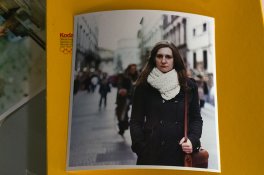Like a number of others have said, thre should be no need to use the Cyan filter. All the colours can be manipulated using the magenta or yellow or a combination of both. If as someone said they made a print needing 40M and 5 cyan. The same effect could have been obtained by dialing out the cyan filtration, then experimenting with the red and yellow filters in varying proportions. I would start by adding another 10m and 10Y (That is assuming you are using an enlarger which is calibrated in Kodak units. Durst enlargers are different.
I always make what is nominally called a 'Ring Around'. A series of colour prints with one that is perfect in the centre and a series of others with varying colour shifts. So you have a quick guide as to what filtration you need to get another print accurate. It is a lengthy job to do but is well worth it.
So for example you have your perfect print which needed 50M and 50M make another by subtracting 5 yellow, then another with 20 units less and a third with 40Y removed. Repeat this for the other 5 colours red, blue, cyan, green and magenta. Make sure you assess the 'perfect' print in daylight when you are setting a base line. Any artificial light is not good enough.




